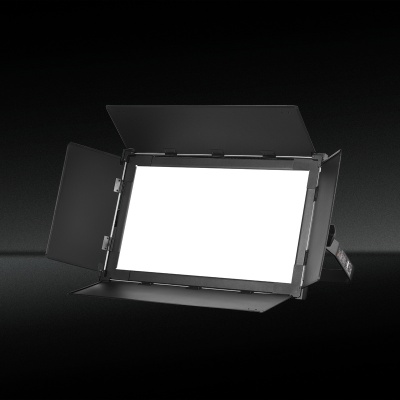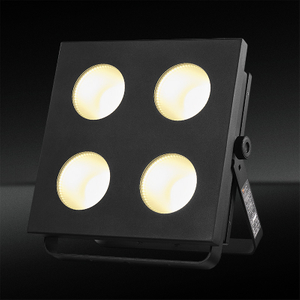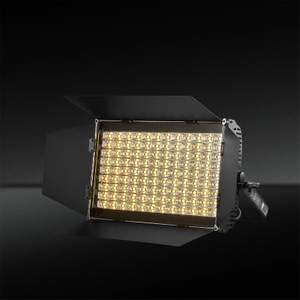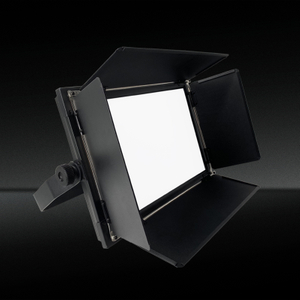Which is better: LED soft white or daylight?
Views: 0 Author: Site Editor Publish Time: 2025-09-24 Origin: Site








When it comes to choosing lighting for your home, office, or any other space, one of the most critical decisions you'll face is whether to go with LED Soft White or Daylight bulbs. Both offer unique advantages, and the decision largely depends on the function and feel you want to create in your space. In this article, we will explore the differences, benefits, and drawbacks of LED Soft White and Daylight lighting. We'll also dive into common questions surrounding these options, providing an in-depth guide to help you make an informed decision.
Understanding LED Soft White vs. Daylight
What is LED Soft White?
LED Soft White bulbs are a type of lighting that emits a warm, yellowish light, similar to the glow produced by traditional incandescent bulbs. Typically, these bulbs have a color temperature ranging from 2700K to 3000K. The soft white light creates a cozy, inviting atmosphere, which is perfect for areas where relaxation and comfort are a priority.
LED Soft White bulbs are energy-efficient alternatives to incandescent bulbs. They provide the same warmth but use far less power and have a significantly longer lifespan. These bulbs are a popular choice for bedrooms, living rooms, and dining areas where soft, relaxing light is desired.
What is Daylight LED?
On the other hand, Daylight LED bulbs are designed to mimic the light of the sun during the midday hours, offering a crisp, bright light with a color temperature of around 5000K to 6500K. This type of lighting produces a cool, bluish tone, resembling natural daylight. It’s often described as a more energizing and stimulating type of light.
Daylight bulbs are ideal for areas where tasks requiring attention to detail or energy are carried out, such as kitchens, bathrooms, offices, or workspaces. These bulbs can help increase focus and alertness, providing a sharp contrast to the warmer LED Soft White lighting.

Comparing LED Soft White and Daylight: A Detailed Overview
| Feature | LED Soft White | Daylight LED |
|---|---|---|
| Color Temperature | 2700K to 3000K (Warm White) | 5000K to 6500K (Cool, Bright Light) |
| Ideal Locations | Bedrooms, Living Rooms, Dining Rooms | Kitchens, Offices, Bathrooms, Garages |
| Atmosphere | Cozy, Relaxing, Inviting | Energizing, Focused, Alert |
| Best for | Resting, Socializing, General Relaxation | Tasks, Reading, Detailed Work |
| Effect on Mood | Calming, Relaxing | Refreshing, Stimulating |
| Energy Efficiency | High (Compared to Incandescent) | High (Compared to Incandescent) |
| Lifespan | Long (25,000 hours or more) | Long (25,000 hours or more) |
LED Soft White: Best For Relaxation
The warm, yellowish tone of LED Soft White lighting creates an inviting and soothing atmosphere. This type of lighting is perfect for bedrooms, living rooms, and areas where you want to relax or socialize. Soft white light helps to create a calming environment, making it easier to unwind after a long day. It is also commonly used in dining areas to provide a cozy ambiance during meals.
Soft White lighting is especially beneficial in spaces that do not require intense illumination but need a softer, warmer glow. These lights can also have a positive impact on your mood, helping to foster a sense of comfort and well-being.
Daylight LED: Best For Work and Task-Oriented Spaces
In contrast, Daylight LED lighting is a better choice for workspaces or areas that demand brighter, more focused lighting. With its crisp, blue-toned light, it mimics daylight and provides a higher level of contrast that can improve visibility and focus. This makes it ideal for spaces such as kitchens, bathrooms, or offices where you need bright, clear light to perform tasks with precision.
Daylight lighting has been shown to improve alertness and concentration, which is why many people prefer it in areas that are used for reading, studying, or any other activity that requires heightened attention. In addition, its cool light can help reduce eye strain and fatigue, particularly in tasks requiring high visual acuity.
Factors to Consider When Choosing LED Soft White vs. Daylight
1. Room Function
The primary consideration when choosing between LED Soft White and Daylight LED is the function of the room. If you are looking to create a relaxing, cozy atmosphere, LED Soft White is your best option. If the goal is to enhance focus and productivity, Daylight LED will be more effective.
For example:
In a living room or bedroom, you’ll want a softer, warmer light that encourages relaxation, so LED Soft White is a better fit.
In a kitchen or home office, where bright lighting is crucial for visibility and productivity, Daylight LED would be the preferred choice.
2. Natural Light Availability
If you are in a space that already receives plenty of natural sunlight, such as a sunlit room or an office with large windows, Daylight LED bulbs can complement the natural light and create a bright, crisp atmosphere. On the other hand, if your space lacks natural light, LED Soft White lighting can help warm up the area and make it feel cozier.
3. Mood and Ambiance
Lighting has a profound effect on mood. Soft, warm lights create a relaxing and intimate environment, while cooler, brighter lights stimulate alertness and concentration. If you want to set the mood for socializing or winding down, LED Soft White lighting is the way to go. For productivity or when you need to stay awake and alert, Daylight LED is the better option.
4. Energy Efficiency
Both LED Soft White and Daylight LED bulbs are highly energy-efficient, using far less energy than traditional incandescent bulbs. They also have long lifespans, often lasting over 25,000 hours, which translates into fewer bulb replacements over time. As a result, both lighting options are great for saving on energy costs and contributing to environmental sustainability.
5. Health Benefits
While Daylight LED lighting has been shown to improve focus and productivity, LED Soft White lighting is better for winding down in the evening. Exposure to bright, blue-toned daylight bulbs late in the evening can interfere with your natural sleep-wake cycle and disrupt sleep patterns. For better sleep quality, it’s recommended to use LED Soft White in the evening to avoid the negative effects of blue light exposure.
Frequently Asked Questions (FAQs)
What’s the difference between LED Soft White and Daylight bulbs?
LED Soft White bulbs provide a warm, yellowish glow ideal for relaxation and creating a cozy atmosphere. Daylight LED bulbs, on the other hand, produce a cool, bluish light that mimics natural daylight, which is perfect for task-oriented spaces where bright light is required for focus and productivity.
Which is better for reading or studying: LED Soft White or Daylight LED?
For reading or studying, Daylight LED bulbs are often a better choice due to their bright, cool light, which improves visibility and concentration. LED Soft White may be too dim for such tasks, as it creates a more relaxing ambiance.
Can I use LED Soft White in all rooms?
Yes, LED Soft White can be used in almost any room, but it is best suited for spaces where a calming and cozy atmosphere is desired, such as bedrooms, living rooms, and dining areas.
Can Daylight LED be used in the bedroom?
While Daylight LED can technically be used in the bedroom, it is not the ideal choice for creating a restful environment. Its bright, cool light can make the room feel more sterile and less inviting, which can affect sleep quality. LED Soft White would be better for a bedroom.
How long do LED Soft White and Daylight LED bulbs last?
Both LED Soft White and Daylight LED bulbs have long lifespans, often lasting between 25,000 to 50,000 hours. This means you’ll spend less on replacements compared to incandescent or halogen bulbs.
Are Daylight LED bulbs better for productivity?
Yes, Daylight LED bulbs are designed to mimic natural daylight, which can improve alertness and productivity, making them a great choice for workspaces, kitchens, or any other environment where focus is essential.
Can LED Soft White bulbs affect my sleep?
Yes, LED Soft White bulbs are ideal for the evening because they emit a warm, calming light that helps relax your body and mind, preparing you for sleep. This type of lighting is less likely to interfere with your circadian rhythm compared to Daylight LED.
Conclusion: Which is Better for You?
Ultimately, the decision between LED Soft White and Daylight LED comes down to your lighting needs and the environment you want to create. If you're aiming for a cozy, warm, and inviting atmosphere, LED Soft White is the way to go. If you need brighter, cooler light for tasks or want to enhance focus, Daylight LED is the better choice.
Both types of lighting offer energy efficiency and long-lasting benefits, but their suitability depends on the specific activities and the mood you wish to create in your space. With this comprehensive comparison, you should now be better equipped to choose the right lighting solution for your needs.






